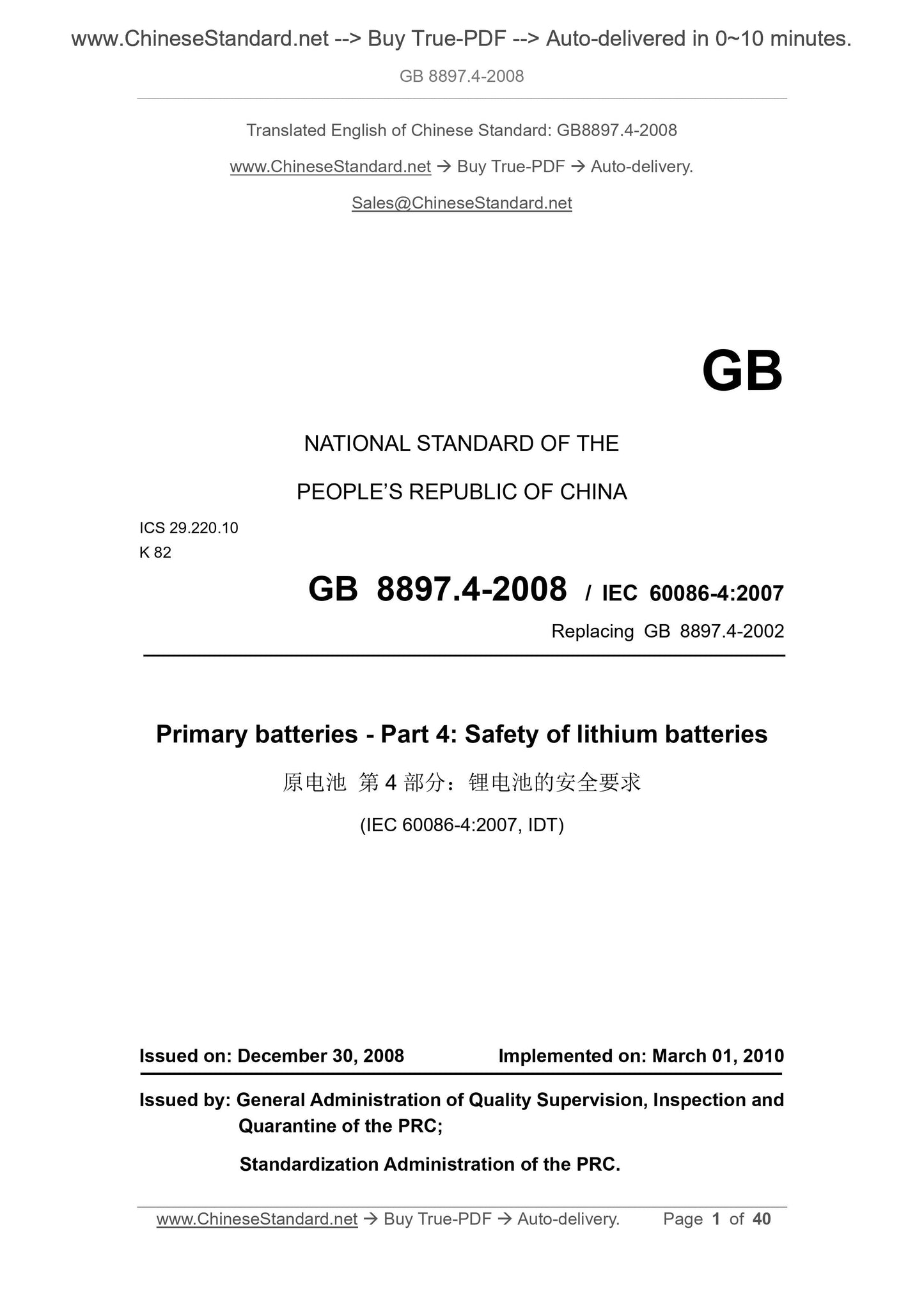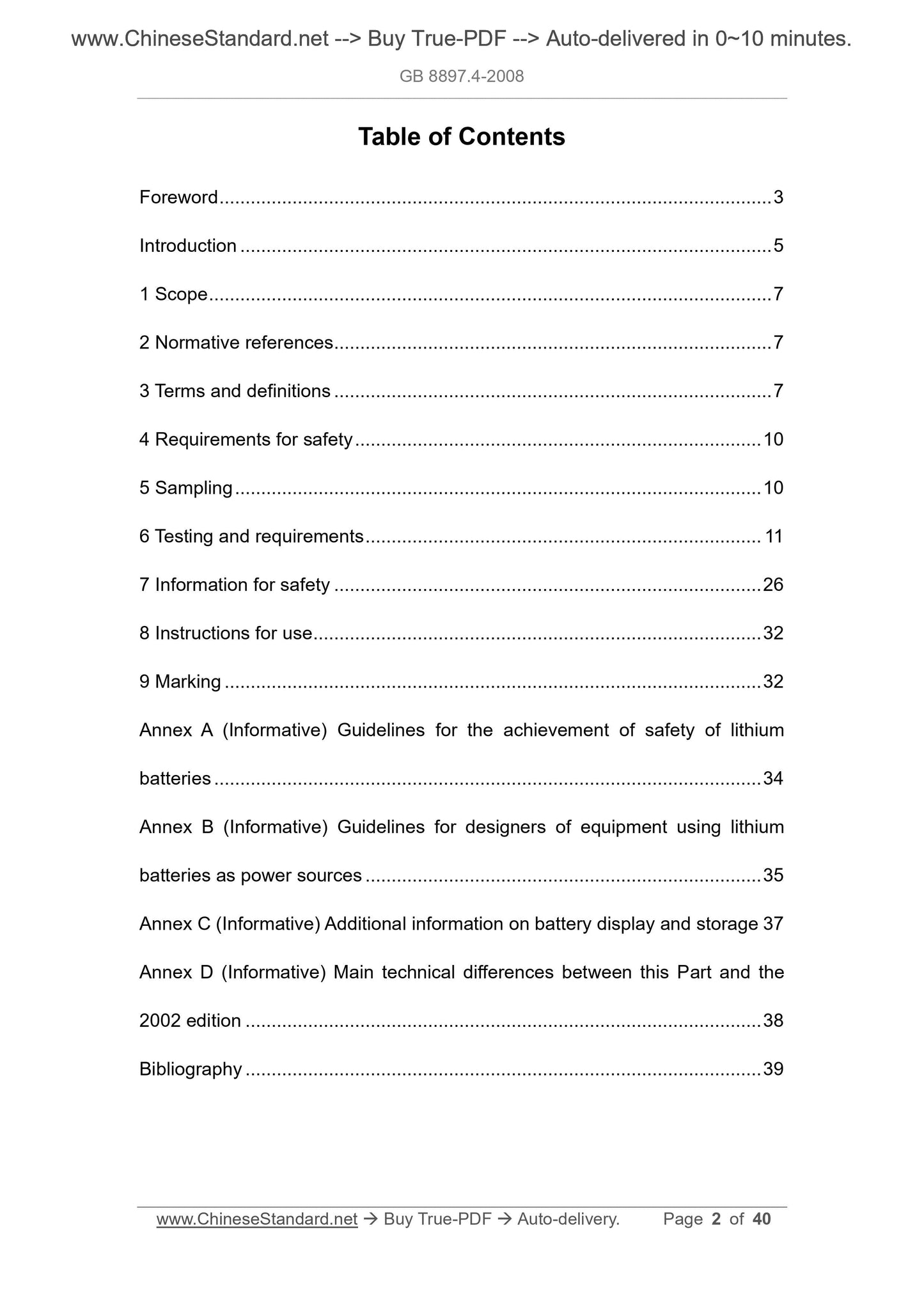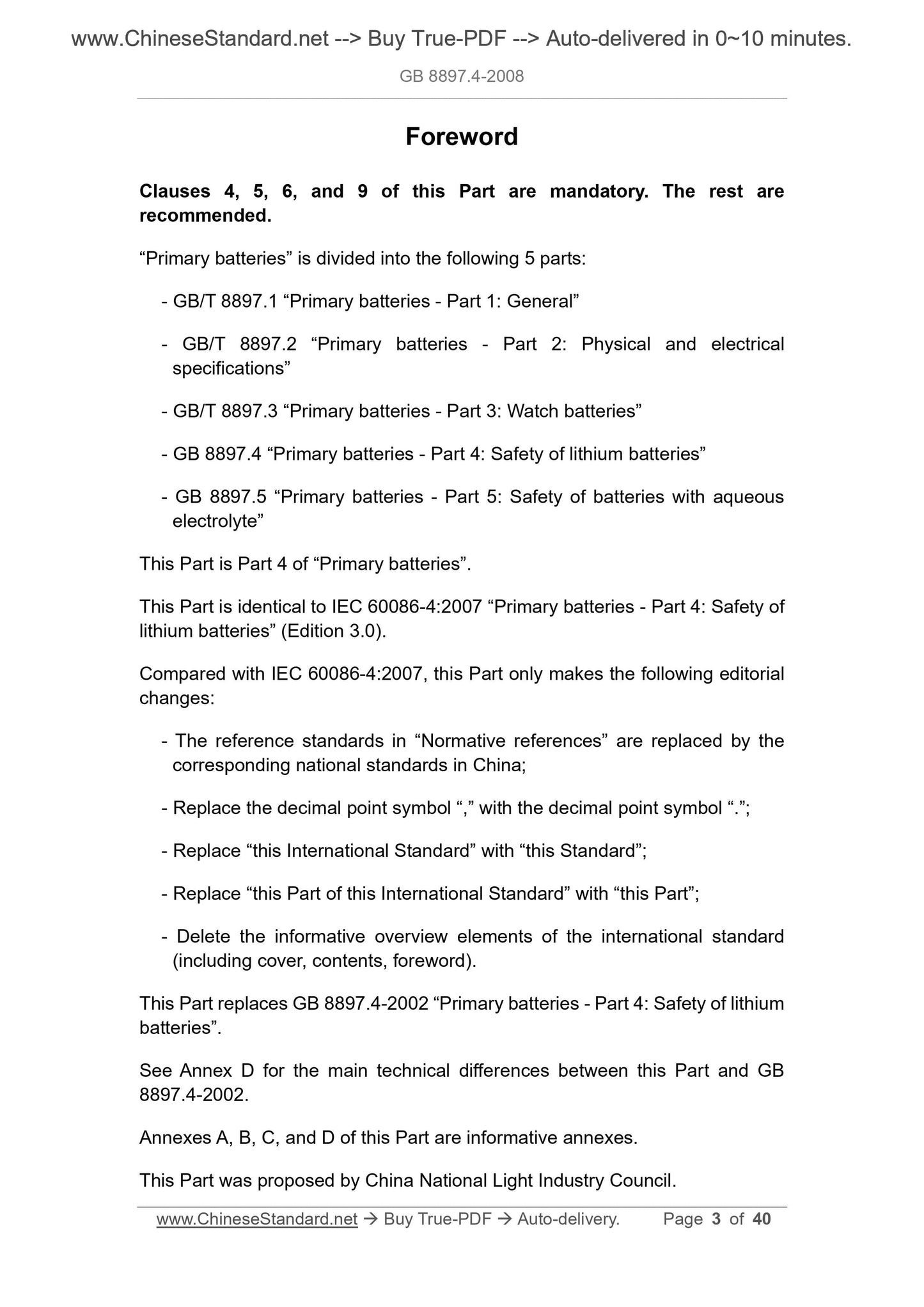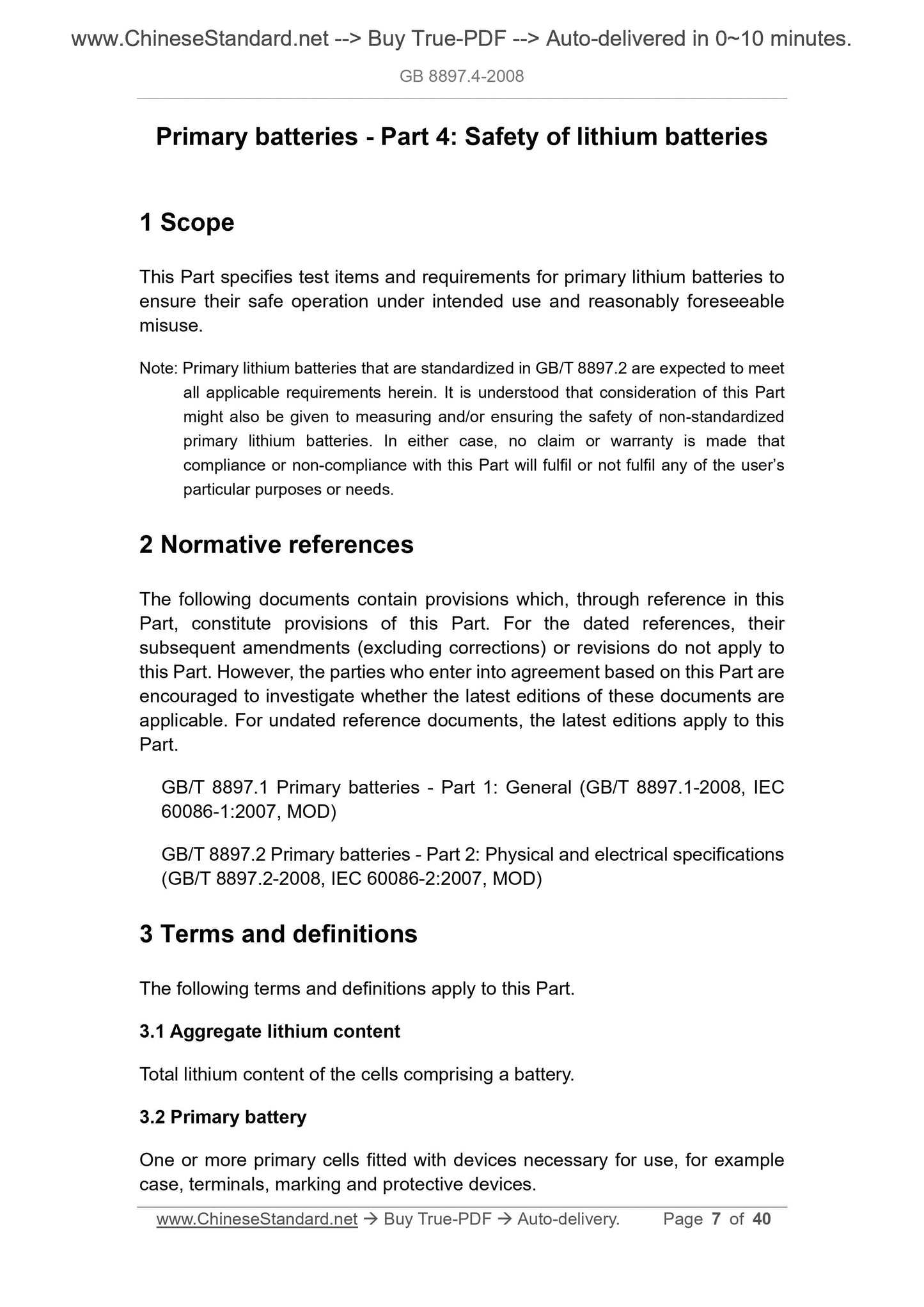1
/
of
4
www.ChineseStandard.us -- Field Test Asia Pte. Ltd.
GB 8897.4-2008 English PDF
GB 8897.4-2008 English PDF
Regular price
$155.00
Regular price
Sale price
$155.00
Unit price
/
per
Shipping calculated at checkout.
Couldn't load pickup availability
GB 8897.4-2008: Primary batteries -- Part 4: Safety of lithium batteries
Delivery: 9 seconds. Download (and Email) true-PDF + Invoice.Get Quotation: Click GB 8897.4-2008 (Self-service in 1-minute)
Newer / historical versions: GB 8897.4-2008
Preview True-PDF
Basic Data
| Standard ID | GB 8897.4-2008 (GB8897.4-2008) |
| Description (Translated English) | Primary batteries -- Part 4: Safety of lithium batteries |
| Sector / Industry | National Standard |
| Classification of Chinese Standard | K82 |
| Classification of International Standard | 29.220.10 |
| Word Count Estimation | 27,218 |
| Date of Issue | 2008-12-30 |
| Date of Implementation | 2010-03-01 |
| Older Standard (superseded by this standard) | GB 8897.4-2002 |
| Quoted Standard | GB/T 8897.1; GB/T 8897.2 |
| Adopted Standard | IEC 60086-4-2007, IDT |
| Regulation (derived from) | Announcement of Newly Approved National Standards No. 25 of 2008 (total 138) |
| Issuing agency(ies) | General Administration of Quality Supervision, Inspection and Quarantine of the People's Republic of China, Standardization Administration of the People's Republic of China |
| Summary | This Chinese standard applies to lithium primary battery test items and requirements to ensure the lithium primary batteries intended use and reasonably foreseeable misuse case safety work. Note: GB/T 8897. 2 has been standardized lithium primary battery shall comply with all applicable requirements section. Understood, this standard can also be used to detect and/or a guarantee of the lithium primary battery of standardized safety. However, the situation of which belong to the above, are not declared or to ensure compliance (or non-compliance) of this standard requires a battery to meet (or not meet) for any particular purpose or user requirements. |
Share







